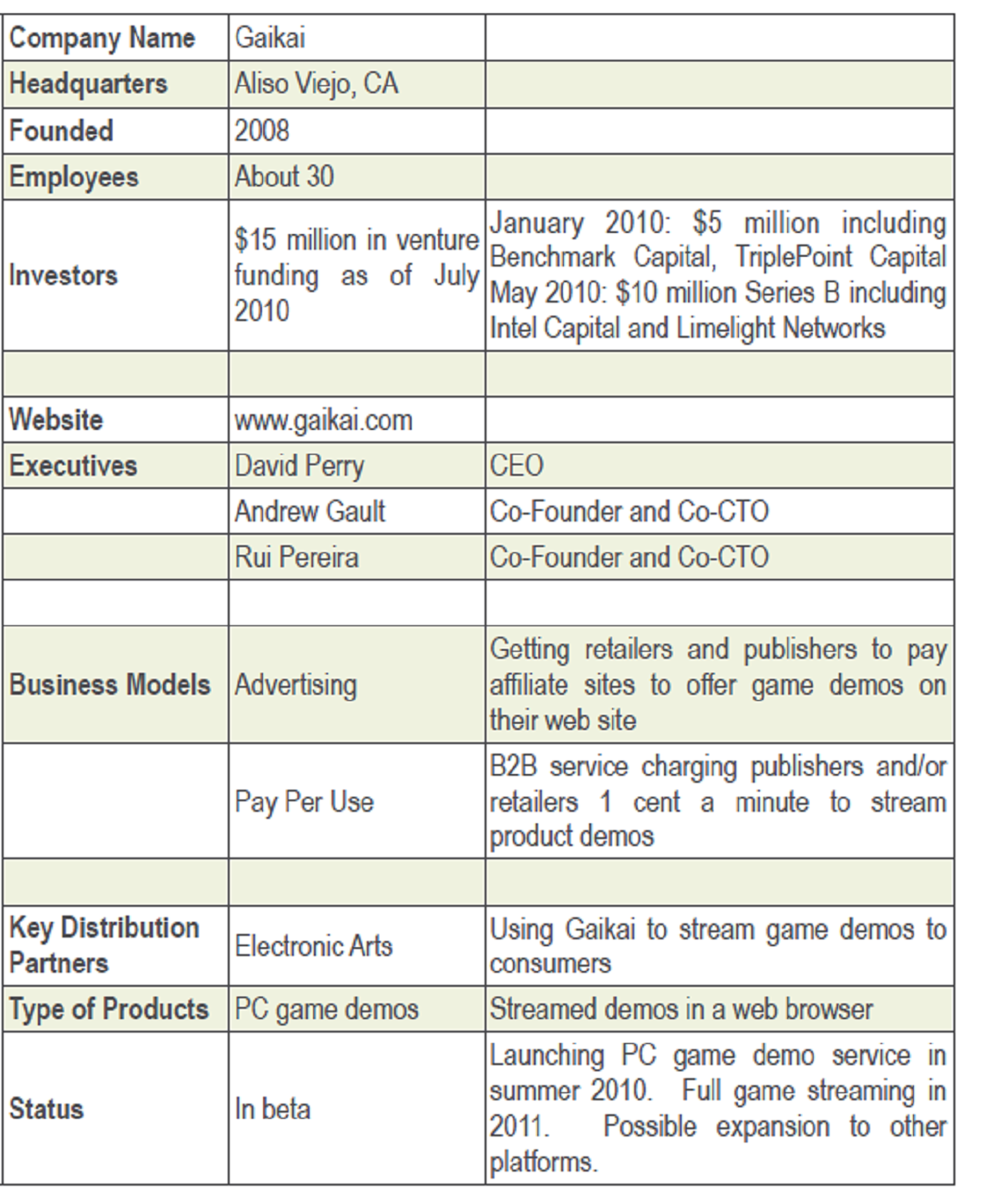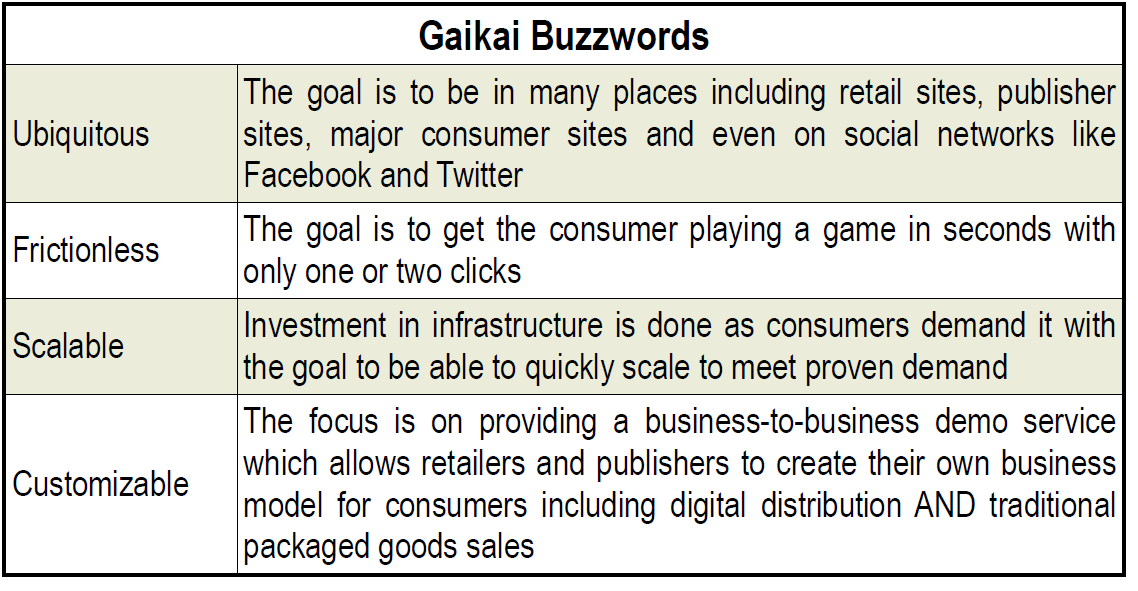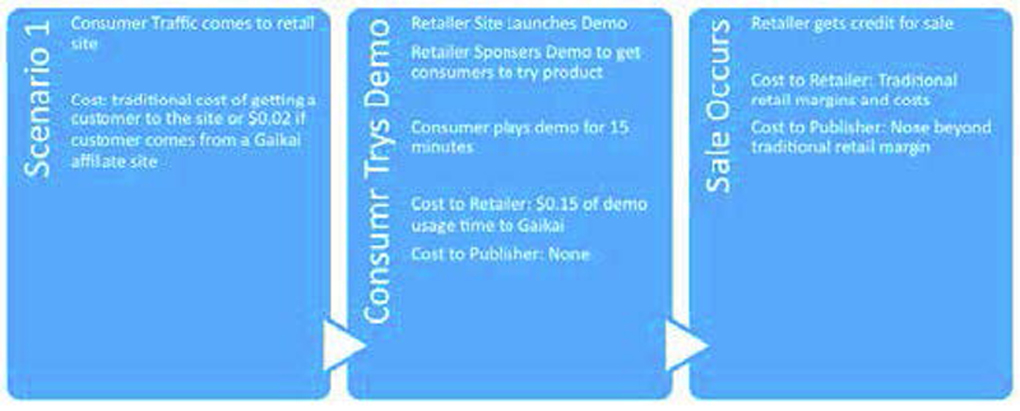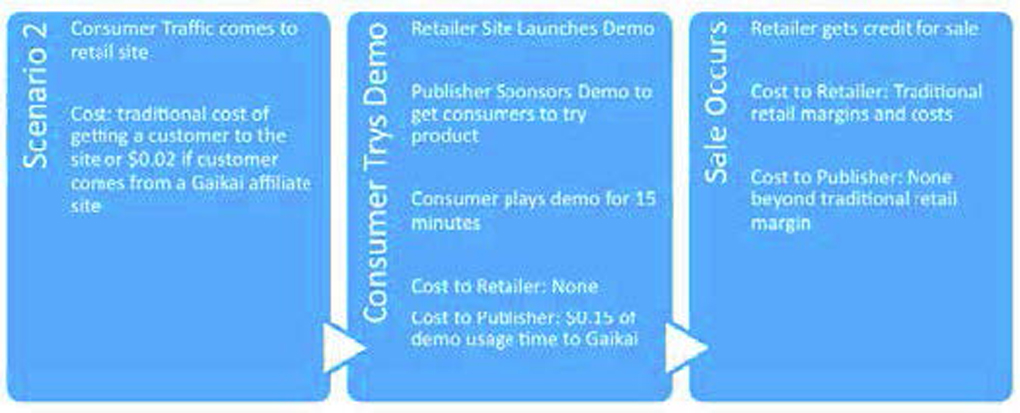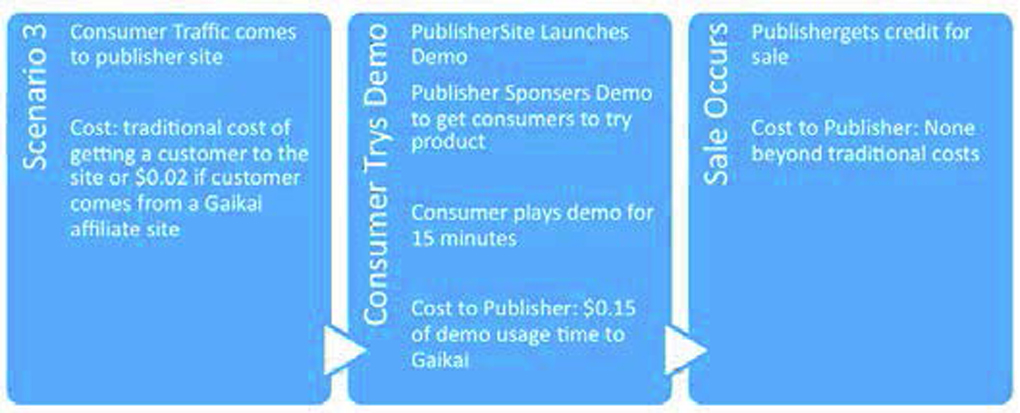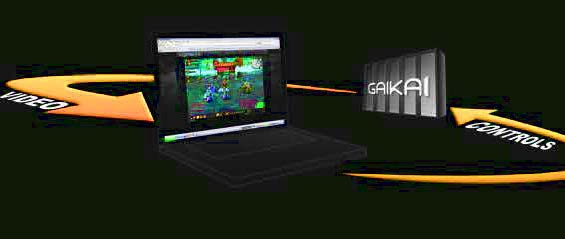JULY 20, 2010 • Since the March 2009 GDC announcement of the new OnLive service there has been a great deal of talk about what the potential is for high-performance cloud-based gaming services.
At a high-end level a cloud-based service is designed to allow consumers to execute high-performance game applications with very low client-side performance requirements. In other words, a consumer can play a high-powered game without necessarily having the high-powered hardware.
Because game companies have been so tied to consumers owning a specific piece of hardware with very specific hardware specifications there is obviously a great deal of interest among developers and publishers in the promise of cloud-based gaming. On the other side of the issue, there is some concern among traditional retailers that something like cloud-based gaming is another form of digital distribution that could cut them out of the food chain.
Most of the media attention has been around OnLive, which has received substantial blue-chip investment and claims to have filed over 100 patent applications for its technology. However, there are several other companies tackling the cloud-based gaming business from very different angles. These include Playcast, based in Israel and the U.K., and the California-based companies OTOY and Gaikai.
Of course, when looking at these companies the biggest hurdle is probably getting the technology to actually work in a way that is able to attract mass market consumers.
However, technology analysis is only one angle. What we can say is that there will likely be all kinds of bugs and kinks to work out. For the companies involved, hopefully these issues can be tackled in a matter of weeks or months, not years.
But technology aside, there is always the issue of business models. In other words, even if these services work as promised is there an actual demand for these services in a way that the companies involved can make money?
So to that end, DFC is starting to look closely at the business model potential of the major cloud gaming services. In this issue we focus on Gaikai.
When starting to analyze cloud-based services one of the first issues is how they should be classified. In other words, should these be considered platforms unto themselves. At DFC the current answer is no, cloud-based services are segmented as an emerging form of distribution.
The potential of these services is as a new way to distribute EXISTING products to a larger audience. We do not see companies creating products EXCLUSIVELY for a specific cloud platform in the near future. So in that sense it expands distribution.
When (and if) products start to appear only on cloud services we will rethink our current segmentation, but for now we look at the promise of these services as a way to expand the potential audience and find news to distribute products to consumers that may not have a specific piece of hardware.
In our initial analysis of the cloud game services we felt that Gaikai was the closest to having a business model focused on building a new form of distribution that also works within the existing infrastructure.
After hearing several presentations from Gaikai CEO David Perry, we were intrigued by his proposal of a frictionless experience focused primarily on delivering product demos. The idea of getting a consumer into a product quickly without making them do a big download or having to signup for a service always hits home.
Furthermore, focusing initially on product demos seems like a fairly modest start that may be an easier sell to the industry.
So to find out more, DFC recently visited Gaikai headquarters in Orange County, CA Of course, with any type of latency dependent server-based technology, being physically close to a server can be critical for performance. So a basic question is: how will consumers and Gaikai know if the service will work for each specific case? According to Perry, the service will only target consumers that are near a Gaikai server. Generally the Gaikai service will be marketed via pop-up ads encouraging a consumer to try a game. However, these pop-ups will only be shown to consumers that can actually play that game because they are close to a server.
This raises another issue. By itself, Gaikai isn’t a business-to-consumer service. Instead, Gaikai can be thought of as a business-to-business service that enables its partners to market and sell products and services directly to consumers. This gets to the idea of being ubiquitous. Gaikai is designed to work with retail sites, affiliate sites, directly from a publisher or developer’s site, and even on services like Facebook and Twitter. The Gaikai business model allows other companies to determine the business model they will use to deliver products to the end user.
So basically a pop-up powered by Gaikai can appear on any site that wants to partner with Gaikai. When the user clicks on the pop-up they can play the game in the browser. The actual site is free to monetize the user however they choice. In many cases it might be a free demo that lasts a certain amount of time and then is designed to get the user to either buy the product for download or have the product physically shipped to them. Of course, in the long term, there could always be the option of actually charging the user to continue streaming the game via a subscription/ pay-per-use model. However, this type of full streaming service is a ways down the road. For now, Gaikai is mainly focused on delivering product demos.
Perry used the example of Amazon.com to describe how this might work. A consumer is browsing for games on Amazon, and based on what products they are viewing a pop-up can occur that is hopefully targeted towards that consumer’s specific game preferences (and of course targeted only to consumers that are close to a Gaikai server). The pop-up will most likely be “click here to try a free demo of this game.” If the user clicks on the pop-up a separate browser window appears for the user to play the game. The user stays on Amazon and plays the game in the browser window.
The goal of Amazon.com is most likely to have the consumer play a short demo and then get the consumer to buy the full product. However, eventually Amazon.com will be free to explore other options such as charging a consumer a subscription or on a pay-per use basis if the consumer wants to continue playing the game via streaming. The main cost to the retailer (or publisher) is they must pay Gaikai 1 cent a minute for streaming. So if a user plays a game for 15 minutes the retailer would need to pay Gaikai $0.15.
The biggest thing to note about Gaikai is they are not taking a cut of the retail sale. They are charging retailers and publishers for the actual time the consumer spends on streaming the product. However, the retailer is able to determine how much they want to spend on trying to drive consumers to buy a full product.
1. Retailer Site Scenario 1: The retailer pays 1 cent a minute to have a user try a demo. So if the user plays for 15 minutes the cost to the retailer is $0.15 paid to Gaikai. However, the retailer would be the one that closed the sell and Gaikai would not receive any cut of the sell price.
2. Retailer Site Scenario 2: The publisher pays 1 cent a minute to have the user try the demo. If the user pays for 15 minutes the cost to the publisher is $0.15 paid to Gaikai. In this scenario, the retailer is still the one that closes the sell and Gaikai still does not receive any cut of the sell price. The only difference is that the publisher is paying for a promotion on a specifi c retail site in hopes of enhancing sales for a specific product.
3. Publisher Site: Of course, a publisher can self-distribute products via their own site. A specific publisher like Electronic Arts can use Gaikai to stream games on their site by paying Gaikai one cent a minute. This can be done as a pay-per-use service, a subscription service or a free demo service designed to get consumers to purchase a full product.
Of course, retail and distribution is all about driving traffic to a specific destination. At a physical retail store it is about foot traffic, where online it is more about driving user eyeballs. It is pure common sense that the more eyeballs you drive to your site the more likely you are to get people to buy something.
So to help retailers and publishers to drive consumers to a specific site, Gaikai plans to work with a wide range of affiliate sites that already have a lot of users or eyeballs. A publisher or retailer can pay 2 cents for sending a consumer to a game via an affiliate site. Affiliate sites would include any site with a large user base such as IGN, Google, Facebook, Konnegrate, Machinma or any site that has a large user base interested in games. The affiliate site would get 2 cents for everyone it sends to the retailer or publisher and would then split that money 50/50 with Gaikai.
A major feature David Perry has pushed for Gaikai is the idea of frictionless gaming. At the March GDC show, Perry showed the example of World of Warcraft and how it takes over 30 clicks for a user to get into the game once they decide to go through the signup process. Of course, this is after the user has already had to go through the ordeal of downloading a big client – a process that can take hours. For Gaikai the goal is that a user clicks on a pop-up and they start playing the game within seconds via the browser.
The theory is that providing this type of frictionless gaming experience will cut down significantly on customer acquisition costs. Today a free-to-play game can cost upwards of $30 per user acquisition. Basically this is because publishers are paying for failed acquisitions.
So for example, in the case of World of Warcraft, Blizzard may decide to try to acquire new consumers by paying Google $0.50 for each click through to the World of Warcraft web site. The problem is a large portion of consumers will drop out AFTER they click through and before they even try the product. Many consumers may get to the Blizzard site and decide they don’t want the product. Other consumers will drop out because the large file download takes too long or simply doesn’t work. Another group of consumers will drop out because of the 30 plus clicks it takes for a consumer to signup after the download is completed. In each case, Blizzard must pay Google the $0.50 for sending the consumer their way. Blizzard also must pay for the bandwidth costs of any failed downloads.
Gaikai claims that they are charging anywhere from nothing to $0.02 to get the consumer to try the product. From that point on the retailer or publisher will only pay for the time a consumer spends actually using the product ($0.01/minute). The most a failed acquisition will cost is $0.02 versus a minimum of $0.50 plus bandwidth costs for a typical ad on a site like Google.
Another big plus with Gaikai is the type of games that can be played with the technology. The demos for Gaikai have showed a wide range of games including Call of Duty 4: Modern Warfare, World of Warcraft, Spore and even Mario Kart. Of course, these games have a wide range of performance requirements and a skeptic would be right in questioning how Gaikai can support many of the fast action (high twitch) games where latency is an issue.
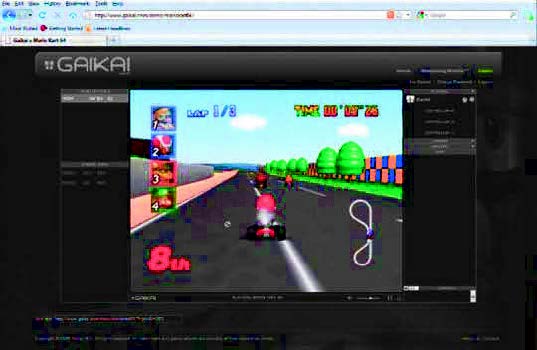
As a brief primer, latency is basically the lag in time between when a user enters a command and the time it shows up on the screen. When a user is located remotely from where the actual processing is done it can take some time for user input to travel to the remote location and then travel back to the user. At the very least, the speed of light acts as a barrier, meaning that the further away a user is from the server the more latency.
Latency always exists in an online environment and it is measured in milliseconds (ms). How much latency impacts the enjoyment of a product varies for each specific game. A fast-paced action game needs to have much lower latency than a turn-based game.
According to Perry, Gaikai is able to target users based on how close they are to Gaikai servers. Thus if a game has very low latency requirements, demo pop-ups might be done only for consumers that are physically close to the actual servers. Games that are less dependent on latency can target users that are further away. For its part, Gaikai claims its service only adds an additional 10 to 25 ms in latency to the equation.
It should also be noted that Gaikai is not limited to just game applications. Perry showed DFC an example of an Adobe Photoshop demo running on Gaikai. Once again the idea is that instead of forcing the user to download a demo you can get them to start trying the product right away.
Initially, Gaikai is focused on using the PC as its main platform. However, theoretically, Gaikai could work on any screen that is connected to the Internet. This is possible because Gaikai convinced Adobe to enhance the latter’s Flash code base for streaming. As a result, Gaikai can successfully stream content to a device like the iPad, which doesn’t officially support Flash, since Gaikai is creating its own Flash environment within a browser. Similarly, Gaikai can provide a high-end graphics experience in-browser regardless of low-end graphics hardware on the consumer’s system.
By summer of 2010, Gaikai had raised $15 million in venture funding. This includes an investment from Intel Capital to ensure all Gaikai servers use Intel processors. In addition, Limelight Networks is an investor in Gaikai. Limelight has a high-speed fiber optic network focused on delivering rich digital content to consumer households. Limelight’s network has been used to deliver content on Xbox Live and PlayStation Network. Gaikai will also be using the Limelight network for its service.
The initial idea for Gaikai is to focus on product demos and not streaming full-game products. In other words, this means Gaikai is still about getting consumers to buy a full product from a retailer or publisher. The ability to stream a full game using Gaikai is technically feasible today, yet still appears to be some ways off until server supply is sufficient to service full game sessions for thousands of consumers. Currently, Gaikai is saying this feature will not launch until sometime in 2011. Given the Gaikai business model and its focus on helping retailers and publishers close a sale, it is not surprising when Perry claims that no retailer he has presented the business model to has had a negative reaction.
In June 2010, Gaikai announced a major deal with leading publisher Electronic Arts to provide many of its games using Gaikai technology. With its business model, Gaikai is clearly focused on making it easy for the industry to support the service. Of course, whether these consumers bite is a very different issue. Services like Gaikai are on the leading edge of the many exciting new ways that products are being distributed to consumers.
A great deal has been made about the competition between companies like Gaikai and OnLive. In reality these are two very different types of services and beyond the back and forth in the media there seems to be little competition. As always the biggest challenge these services face will probably be technology issues. Of course, if the technology does not work consumers simply will not bite.
On the other hand, even if the technology does work it may not mean a service like Gaikai is a success. In many cases, if a technology and business model does work it attracts scores of competitors. One of the biggest challenges Gaikai may face is trying to avoid being the pioneer with an arrow in their back.

